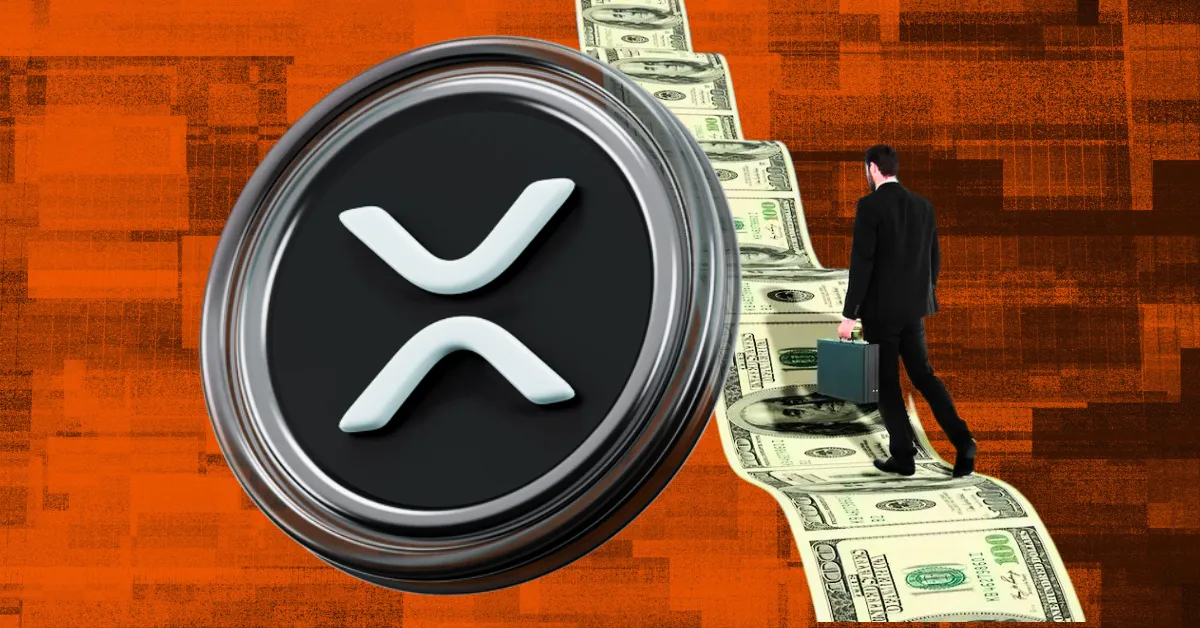
XRP could be gearing up for a massive price breakout, potentially hitting double digits, if Ripple CEO Brad Garlinghouse’s bold forecast becomes reality. Speaking at the XRP APEX 2025 event in Singapore, Ripple CEO Brad Garlinghouse projected that XRP could handle 14% of SWIFT’s global transaction volume within the next five years. The key, he says, lies in liquidity, not messaging.
SWIFT handles a massive chunk of global financial transactions, estimated at around $150 trillion per year. Garlinghouse emphasized that while SWIFT is known for messaging, the real value lies in liquidity which is the actual movement of money. That’s where XRP fits in as a bridge asset, designed to facilitate instant cross-border payments.
If XRPL captures 14% of SWIFT’s volume, that would mean $21 trillion flowing through the ledger annually. But XRP doesn’t need to store this full amount. Instead, its value depends on how quickly the same tokens circulate through the system. This “token velocity” determines how much XRP needs to be locked up at any time to handle global flows.
At the moment, XRP is ranked fourth on CoinMarketCap with a $136 billion market cap. The token is trading at $2.31 after modest gains this week. With institutions showing more interest in blockchain-based solutions, XRP is gaining new attention as a serious player in cross-border finance.
There have also been talks of a potential collaboration, or even replacement, between Ripple and SWIFT. Garlinghouse hinted at the idea earlier this year, and a former SWIFT employee claimed that banks have tested XRP’s compatibility with the SWIFT system.
A surge in XRP’s price would significantly increase its market capitalization, making it more attractive to institutional investors who seek assets with higher liquidity and a proven track record of growth and stability.
Ripple emphasizes liquidity because the real value in cross-border payments lies in the swift and efficient movement of actual funds, not just sending messages. XRP acts as a bridge currency to provide on-demand liquidity, cutting costs and delays.
Challenges include overcoming SWIFT’s deep-rooted global network and regulatory backing, achieving widespread adoption by diverse financial institutions, and navigating ongoing regulatory uncertainties, particularly in the U.S.
A collaboration could modernize global payments by integrating blockchain efficiency with SWIFT’s existing reach. It could lead to faster, cheaper cross-border transactions and set a precedent for traditional finance adopting digital assets.
CoinPedia has been delivering accurate and timely cryptocurrency and blockchain updates since 2017. All content is created by our expert panel of analysts and journalists, following strict Editorial Guidelines based on E-E-A-T (Experience, Expertise, Authoritativeness, Trustworthiness). Every article is fact-checked against reputable sources to ensure accuracy, transparency, and reliability. Our review policy guarantees unbiased evaluations when recommending exchanges, platforms, or tools. We strive to provide timely updates about everything crypto & blockchain, right from startups to industry majors.
All opinions and insights shared represent the author's own views on current market conditions. Please do your own research before making investment decisions. Neither the writer nor the publication assumes responsibility for your financial choices.
Sponsored content and affiliate links may appear on our site. Advertisements are marked clearly, and our editorial content remains entirely independent from our ad partners.
The XRP community has always been highly active and protective of its ecosystem. That became…
XRP exchange-traded funds are becoming one of the most important factors shaping the token’s future…
Finding a new crypto at an early stage is one of the most important goals…
Since the start of the month, the crypto markets have been up with a significant…
Bitcoin recently surged above $90,000 and marked an intraday high close to $91,000, which triggered…
Story Highlights The live price of the Cardano token is . Price prediction suggests potential…